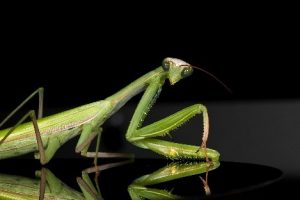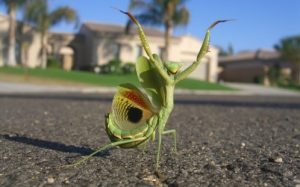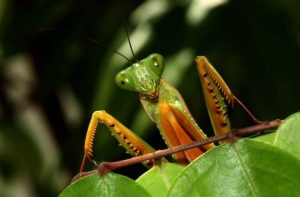[Past Projects]
Dr. Henry Astley, Dr. Gavin Svenson (CMNH), Colleen Unsworth



Research:
Praying mantises (Mantodea) catch a meal by rapidly propelling specialized forelegs at their prey. Sharp spines lining the forelegs allow them to hold onto their meal as they feast. Although mostly comprised of insect invertebrates, a praying mantis’s diet can include rodents, amphibians, or even small birds. Research surrounding the mantis’s powerful strike has exciting potential for investigation, including exploration of the systematics and phylogenetics of mantises, the biomechanics of the strike, and the potential for power-amplification as a means to generate ultra-high strike speeds. Join Colleen Unsworth, a Biomimicry Ph.D. Fellow, in working with Dr. Henry Astley and Dr. Gavin Svenson of the Cleveland Museum of Natural History to explore the biomechanics of the praying mantis strike.
Watch the strike here! https://youtu.be/cGLBUCPv3Iw
Benefits:
- Learn principles of biomechanics & invertebrate zoology
- Learn about insect systematics & phylogenetics
- Learn new research skills and technologies such as high-speed videography
- Work with live animals
- Independent and collaborative research experience
- Scientific reading/writing experience
- Mentoring experience
